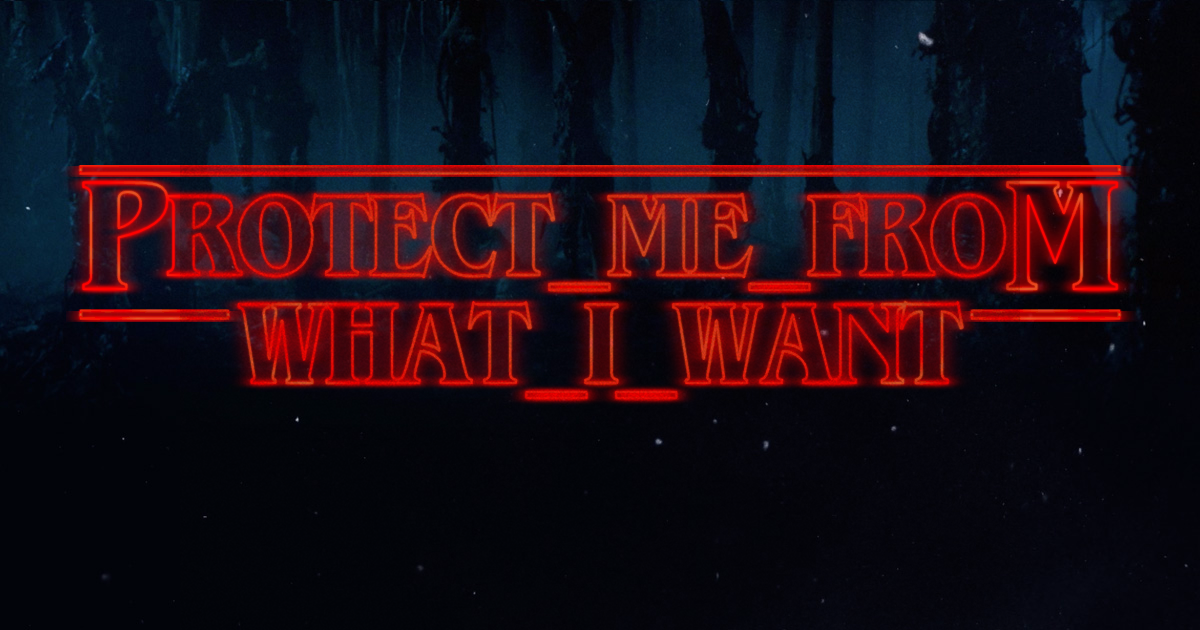If you're on social media at all, you probably noticed a couple evanescent memes float past your attention in the past few weeks: phrases written in the font and style of the Stranger Things opening credits, and unusual colorways for the cultish LaCroix sparkling water. Perhaps you took a minute or two yourself, on Make It Stranger or My LaCroix, to make a little joke with them. I did.

See, it's funny because … nevermind.
Both tools were made by a small creative firm, one that does Web design, branding, data visualization, print design, and, yes, marketing. Sure, they were supposed to be memes and go viral. But they weren't done for Stranger Things or LaCroix. They were just done for fun.
They came out of the Chicago-based company Nelson Cash, which has done work for Google, Sheryl Sandberg's "Lean In" campaign, the Bulls, and others. But the firm leaves time to experiment, like when it hacked an Amazon Dash button, the little devices you push that automatically re-order stuff like toilet paper from the retailer, to notify its company Slack account when someone brewed a new pot of coffee.
"A lot of the stuff you'll find on our Labs are internal ideas, experimentation," says Uri Ratner, Nelson Cash's founder. "We dedicate a lot of people's time on Fridays to experiment and come up with new things, or build something you find interesting and that's been itching in the back of your mind. Clients often want the deliverable, but when I'm talking with clients I'm often saying, Hey, if I was you, the important thing isn't just the deliverables, but how we think. You're buying how we solve problems. I think the Labs piece helps show that."
Make It Stranger came out of a couple things. First, a wonderfully detailed breakdown of the Stranger Things title typography by Nelson Cash designer Sarah Gless, which got more than 20,000 views. Second, they saw a need of sorts in the marketplace.
"Just randomly one day, someone in Slack was like, ‘Hey, do you think we could make this for the Web?’ We'd seen some people make some crude Photoshop mockups [of the Stranger Things title], and I was like, you know what, that's a pretty good idea," says Mike McMillan, a designer and developer at the firm. "I took it and ran with it. I had a slow week, so I hacked it together and had a working prototype the next Monday. I worked all weekend on it because I was super-passionate about it."
It worked. "Within an hour, even before we planned to send it out to a lot of places, it blew up through Twitter. Like, wait, what's happening, oh my god," says Gage Salzano, a senior designer at Nelson Cash who worked on promoting the sites.
Later they visualized what people entered into the generator. Unsurprisingly, it turned out to be memes within memes—and profanity. One of the biggest memes was “MANDA NUDES,” Portuguese for "send nudes," because of Netflix’s popularity in Brazil.
My LaCroix came about because they wanted to see if they could go viral again, and they wanted to experiment with some new skills.
"The big driving factor in both of these projects as an artist and developer was trying to do something that was different, and something that is fun, that I don't get to do every day. For La Croix, it was do something in 3D; I'd never done that before on the Web," McMillan says. "La Croix took a little bit longer because it was messing with the 3D stuff that I'd never done before. That one took from concept to pushing it out, 20 days."
Why LaCroix? Because they drink a lot of it (103 cases as of mid-September), and because, as a design-focused studio, there was an appreciation for its singular design. "It's a sweet can design, super unique, not classic Coca-Cola or minimal Pepsi. It's like a ’90s jazz vibe of color explosion," McMillan says, "just weird wonkiness that kind of sits weird. That's the charm of the brand."
To subtly complement LaCroix's aesthetic, they went with a Windows 95 interface.
The LaCroix site was a bit slower to take off. "We started looking into it a bit more, and it turns out it's totally just a Midwest thing. They have it in New York, and I think they started carrying it in California, but for the most part it's just little sections of the country that drink it a lot," McMillan says. Nonetheless, users created more than 6,000 cans as of last week.
"A lot of things aligned to make it work," Ratner says. "I wish there was some super secret sauce that I could tell you, but unfortunately it's a lot more like life."



Comments are closed.